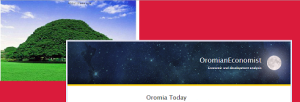OCHA: Regional Outlook for the Horn of Africa and Great Lakes Region: Recommendations for Humanitarian Action and Resilience Response – October to December 2016 October 27, 2016
Posted by OromianEconomist in The Colonizing Structure & The Development Problems of Oromia.Tags: Africa, Ethiopia, Number of children reached by nutrition screening dropped in Amhara and Oromia, OCHA, Why Famine is a Permanent Phenomenon in Ethiopia?
trackback
Due to the convergence of climatic, conflict, and economic shocks, the number of food insecure people in the region facing Crisis and Emergency (IPC 3 and 4) levels, has doubled in the last 12 months from 11.0 million in September 2015 to 23.4 million people today. The worst affected countries are Ethiopia (9.7 million people), South Sudan (4.79 million people), and Sudan (4.42 million people).
In Ethiopia, anti-government protests by the Oromo and Amhara ethnic groups continued with reports of casualties among protesters and security forces. OHCHR has called upon the Ethiopian government to permit the deployment of independent observers into the country to access the human rights situation.
Drought exacerbated by El Niño, combined with extensive flooding, disease outbreaks and the disruption of basic public services, continue to have a negative impact on the lives and livelihoods of 9.7 million Ethiopians. Overall food security and agricultural production remain severely affected, with cascading effects on livelihoods, nutrition, health, water, sanitation, education and other sectors.
Number of children reached by nutrition screening dropped in Amhara and Oromia
The number of children reached by nutrition screening reduced significantly since July in Amhara and Oromia, coinciding with the increased unrest in the two regions. The drop was most significant in Oromia, where the number of children screened went down from an average of 3 million between January and June to 2.1 million in August. In Amhara screenings reduced from an average of 920,000 in the first half of the year to some 380,000 in August. In contrast, the Afar region has maintained an 80 per cent screening coverage on a monthly basis, according to the Nutrition Cluster. read-more-at-humanitarian_bulletin_24_october_2016
Internally displaced persons in Babile and Kubi need urgent humanitarian assistance
Some 5,100 internally displaced families in Babile and Kubi woredas of the Somali region need urgent humanitarian assistance. According to recent multi-sectoral assessment, priority needs include some 650 metric tons of food per month for the next four months as well as supplementary feeding for children and pregnant and lactating mothers, clean water, and emergency shelter and non-food items. The new displacement is the result of resource-based conflict that started in June-July 2015 in East and West Hararge zones of the Oromia region. The Oromia and Somali region officials are discussing on a possible return of the IDPs to their areas of origin. read-more-at-humanitarian_bulletin_24_october_2016




Comments»
No comments yet — be the first.